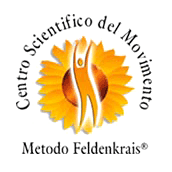AA.VV. Atlante di Anatomia. Giunti, 2000
Aleksandr R. Luria.Introduzione alla neuropsicologia. Il Mulino Bologna 1997
Anne D. Novità- Moreno, M.D. Il cervello. Jackson libri. Rist. 2000
Lucien Israël. Cerveau droit Cerveau gauche cultures e civilisations. Plon, Paris. 1995
Moshe Feldenkrais. Il caso di Nora Astrolabio, Roma, 1996
Moshe Feldenkrais. Il corpo e il comportamento maturo. Astrolabio, Roma, 1996
Moshe Feldenkrais. Il Metodo Feldenkrais, conoscere se stessi attraverso il movimento. ed red! Milano 2003
Moshe Feldenkrais. Le basi del Metodo per la consapevolezza dei processi psicomotori. Astrolabio, Roma, 1996
Moshe Feldenkrais. Lezioni di movimento sentire e sperimentare il Metodo Feldenkrais ed. italiana a cura di F. Ambrosio. Mediterranee, Roma 2003
Philippe Boulu. Le dynamique du cerveau entretenir sa santé cérébrale. ed. Payot, France 1991
